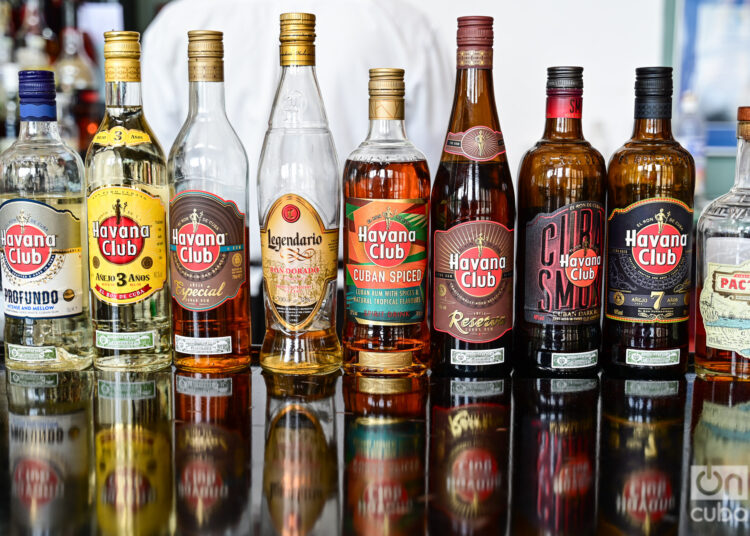Among the eight priority objectives of the economic plan for 2025, two are decisive both for tomorrow, that is, for the short term, and the day after tomorrow, the long term. They are to increase the country’s external revenues and national production.
There may indeed be a certain independence between the two, but the conditionality between the two is much greater and, above all, the dependence of the first on the second. It is relatively difficult to increase export revenues without exporting more, and it is even more difficult to export more without producing more.
It is clear that a favorable price situation in the international market would allow for an increase in export revenues with the same magnitude of exported products.
Nickel
The country could receive more export revenues if the international crisis and wars increased the demand for nickel and cobalt to produce weapons. Or if governments, convinced that climate disaster is a short-term danger, were to encourage the production of technology based on solar energy.
This would boost the demand for batteries and this in turn would increase the demand for nickel and cobalt, two essential raw materials in this new development, of which Cuba has one of the largest reserves in the world and for a time was among the top seven or eight world producers.
Sugar
The same would happen with sugar, although in this case, right now and in the short term, there is not much that can be achieved because the damage to what was once the most powerful productive system in the country has been so great.
Rum and tobacco
Rum, tobacco, and premium cigars are another matter. In these cases, these are markets for high-income segments in high-income countries. The joint ventures that produce and export them have extensive experience and knowledge of the international market and have survived the regulatory and other rigors that characterize the “business environment” of our country. They are products inserted in global value chains, very demanding due to the characteristics of the demand.
They are genuine products, difficult to imitate, although not impossible.
They have been a great business for Cuba and the articulation between the national producers of the fundamental raw material (cane alcohol produced in Cuba and tobacco produced in certain regions of Cuba) and the international market, with an already reached and relatively consolidated space, should be taken care of.
The cut in the production of both raw materials is a latent threat that conspires against these two “export resources.” Without cane there is no alcohol, without alcohol there is no rum; I heard this deduction, almost a “discovery,” some time ago, in a report on Cuban television and it really took me a while to recover from so much “wisdom.”
Has everything been done that is necessary to take care of, promote, and encourage these two articulations on which two of our main export products depend?
Biotechnology
We have another sector that could be decisive and that years ago generated important income from its exports: biotechnology pharmaceuticals. It was the sector that demonstrated how important the priority was that was always given to the training of highly qualified human resources in the development strategy.
It is, however, a very competitive market, with high regulations, a high-risk factor, with a relatively long cycle ― which can reach up to twelve years ― to obtain a product after a pharmaceutical target has been discovered. It is also a market dominated almost entirely by transnational companies that monopolize it and prevent, with resources of all kinds and magnitude, the entry of competitors.
Medical services
Among professional services, medical services have been the pillar that for a long time allowed our country to have a positive current account balance, something that has changed drastically in the last three years.
The medical services market that we enjoyed for a decade, based largely on political agreements, seems will not be repeated, at least in that scale.
Here it will be necessary to explore other variants, such as telemedicine. But it will have to be done by competing in a very demanding international market.
It is certainly possible and perhaps, if done properly, it will serve not only to obtain revenues but also to recover and reintegrate doctors who have preferred other sectors with better pay in order to provide a better life for their families.
Tourism
Tourism, our never-so-well-accomplished new locomotive, does not seem to have the possibility of reversing its situation in the short term. On the one hand, it faces and will face more measures from the Trump administration; on the other, other competitors in the region have moved ahead in the price-quality relationship of their products, in infrastructure, in the facilities for investors, and in the attention to their guests.
The truth is that some of tourism’s problems, several of them very important and decisive, do not even depend on the sector, such is the case of the country’s poor infrastructure, from airport terminals to the garbage accumulated in the streets of our cities; not to walk around the interior of hotels and the buffet tables so weakly stocked.
Here, in tourism, it is also possible to change, although it may take more than a couple of years and a good part of this process of change involves banishing the centralization that characterizes the management of enterprises, allowing hotels to operate with an exchange rate that allows them to articulate with the different actors of the national economy and unifying the sector once and for all, whether for one side or the other; at this point, it does not matter.
Communications
In the case of communications, which at one time contributed around 800 million dollars, the devaluation of the national currency seems to have been the final blow that reduced its income in that currency. Today we are better connected than ten years ago, without a doubt, but this sector in the world advances by the second and investments are essential to guarantee the service and recover its capacity to generate revenues in dollars.
I believe that these have been the main sectors in the generation of export revenues. All of them, including medical services, biotechnology and communications, required several years, even decades in some cases, to consolidate themselves as export sectors.
Of these, we have practically lost the sugar sector; tourism is limping under the weight of inexplicable regulations and centralizations; meanwhile, medical services are facing the reduction of the business modality in which they were consolidated and the need to change to other modalities.
There is also undoubtedly the possibility of finding new export products, but it will be necessary to review the incentives and the regulatory framework that “encourage” producers and service providers, because in the end they are the ones who decide the game.










